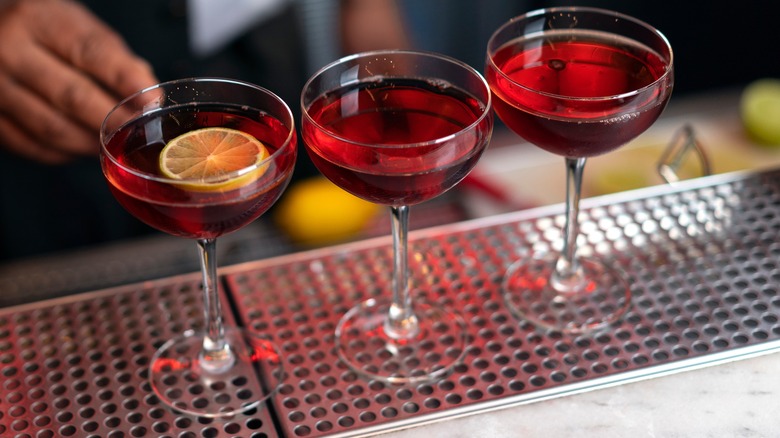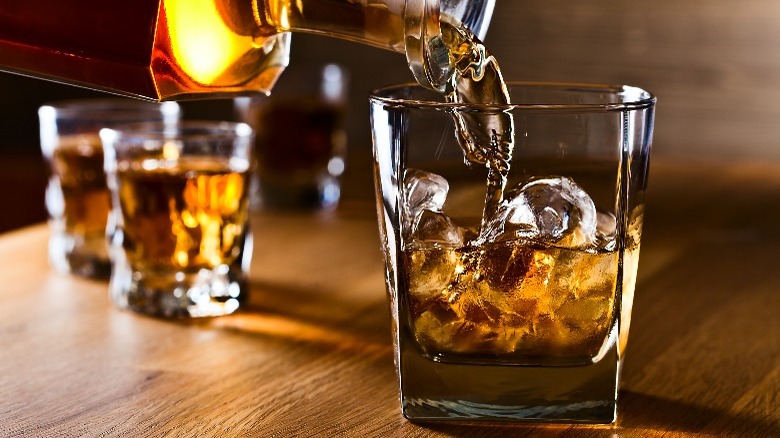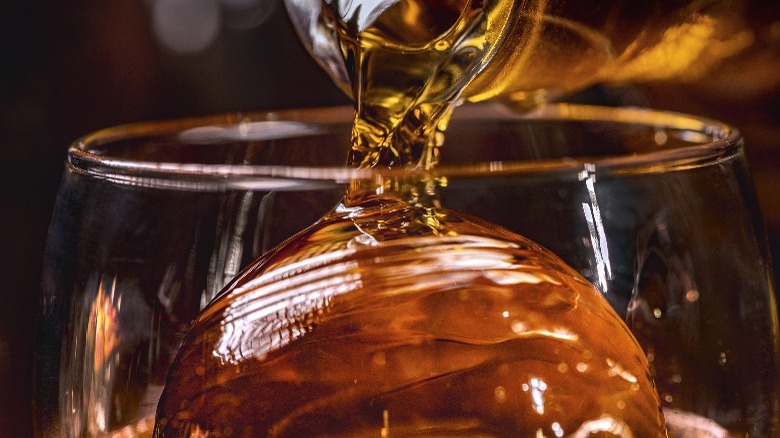FYI — Asking For No Ice In Cocktails Doesn't Mean You Get More Liquor
You may think that you're pulling a fast one on your bartender and getting more bang for your buck by asking for no ice in your cocktail, but the truth is that this trick won't ever work in the way you intend. The resulting glass will either have the same ratio of ingredients sans the ice or will actually have more mixer inside. In either case, the liquor content will remain the same. Bartenders, who are just trying to make some extra cash on long nights, are not, in fact, trying to rip you off.
Despite what certain TikTok videos may say, asking for no ice will never result in more liquor. Sure, pulling the ice cubes out of a drink may seem to prove that the liquor only takes up about half the actual glass, but whatever is left is usually the standard measurement. If you ask for no ice, you won't get the rest of the glass poured to the brim; you'll merely get the same amount of booze. That's because of both liquor serving regulations and the fact that ice plays a role in keeping cocktails cold, refreshing, and tasty.
Ice is actually nice
It's basic science that ice will make the volume of drinks seem larger. However, more ice actually helps your cocktail to dilute less quickly, proving that bartenders actually have your best interests at heart. At the same time, ice needs to melt in order to effectively chill whatever liquid it gets placed inside. That's because heat leaves the drink and transfers to the ice, raising its temperature and causing the cube to melt. That is to say; ice cools down a drink by absorbing heat from the liquid. As Dave Arnold, president of the Museum of Food and Drink, puts it in his book "Liquid Intelligence," "There is no chilling without dilution, and there is no dilution without chilling," (via SevenFifty Daily).
Although it may sometimes look as though bartenders are overloading a drink with ice, they're actually trying to make your drink last longer. Ironically, more ice means your cocktail will be less watered than it would be with less ice. That is, unless you take a long time to drink it. By then, however, it's all the fault of the drinker, not the server. Besides, the quality of a bar isn't defined by how much ice goes into the drinks it serves. Instead, it's the quality of the ice that matters.
Quality over quantity
Cubed ice works best for mixed drinks and cocktails. The crushed stuff is the quickest to cool off but also the quickest to melt. This is why a whiskey on the rocks often has one giant cube or sphere to help chill the delicate liquor. These shapes take up less surface area and thus melt at a slower rate, diluting the whiskey just enough to smooth it out without watering it down too much.
The visual appearance of the ice is another important factor in the art of mixing drinks. A crystal clear transparency means the ice is pure and dense, which means a slower melting time. White and cloudy ice cubes, however, are a sign of air pockets that formed as a result of water freezing quickly all at once. This is a surefire way to tell that your ice will melt faster when the air and other gases and minerals push against the frozen layer as the temperatures rise.
Creating clear ice is more complicated than it sounds, and it's typical for bars to order it from outside sources instead of installing a bulky, complicated, and expensive machine. If you ever see crushed, white ice, though, please remember that your bartender is still not trying to rip you off. They're just using whatever resources they have at their workplace. There's much more that goes into the complex art of mixology than the amount of ice inside a drink.



